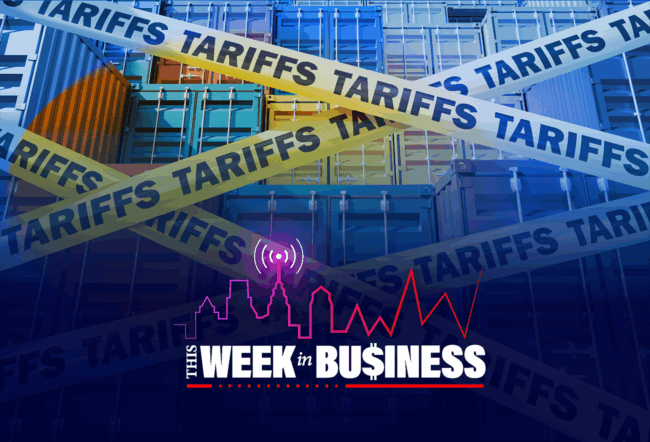The latest rise in the inflation rate to 4.2% for April 2021 has fueled expectations that the Federal Reserve could raise interest rates and tighten monetary policy. The rise in the consumer price index for all items is the largest 12-month increase since a 4.9% increase in September 2008, the U.S. Bureau of Labor Statistics (BLS) reported earlier this month.
In recent times, the Federal Reserve has been willing to accommodate higher inflation, but that stance could change with the unexpected pace of price increases in the latest data. “The Fed sent pretty clear and strong messages over the last year or so that it is not going to be deterred by signs of inflation, and that it’s going to keep a loose monetary policy and keep [interest] rates down,” said Wharton finance professor Itay Goldstein in an interview on the Wharton Business Daily radio show on SiriusXM. (Listen to the podcast at the top of this page.)
That position could now change as the inflation data for April “was quite alarming,” Goldstein continued. “No one really expected the number for inflation to be that high. So now we start seeing more expectation that maybe the Fed will eventually act and start raising rates and tighten monetary policy.” The federal funds target rate serves as the benchmark for bank interest rates and is currently in the range of 0% to 0.25%. The Federal Reserve has said it expects to keep its benchmark interest rate near zero through 2023.
According to Wharton finance professor Jeremy Siegel, the Fed may not have a choice but to raise rates. Siegel has spoken about the threat of rising inflation over the past year, including on the Behind the Markets show that he co-hosts on SiriusXM, and elsewhere in media interviews. “We could have significant inflation in 2021 and 2022, resulting in a cumulative rise of about 15% to 20% of the price level,” he said. “We will not have the chronic inflation of the 1970s. The Fed will be forced to raise rates. [President Joe] Biden’s stimulus, on top of last year’s stimulus and monetary expansion created a serious inflation situation. But the economy will remain strong.”
“The Fed will be forced to raise rates.” –Jeremy Siegel
In explaining a potential shift in the Fed’s approach, Goldstein pointed to recent comments by Fed chairman Jerome Powell that the central bank is not necessarily targeting inflation of 2%, but it wants to see 2% on average over a period of time. The Fed is looking at “a broad range of financial conditions,” rather than a single measure, Powell said in a March 2021 interview with the Wall Street Journal.
“[Powell’s comments] indicated even if [inflation] goes above 2% temporarily, we’re not going to change the monetary policy,” said Goldstein. “So the expectation was that the Fed is going to stick to it and keep the rates low and keep monetary policy loose.”
Room for Tightening
Powell had kept the door open to tighten monetary policy if warranted. “If conditions do change materially, the [Fed’s rate-setting] committee is prepared to use the tools that it has to foster achievement of its goals,” Powell said in the Wall Street Journal interview.
Later, in April, Powell reiterated in a letter to Florida Republican Sen. Rick Scott that the Fed would intervene if the inflation rate stayed above 2% for a prolonged period, Reuters reported. “If progress towards our employment and inflation objectives slows, we will maintain a highly accommodative stance for longer,” Powell wrote in the letter. “Conversely, if progress turns out to be more rapid, adjustments to the stance of policy would likely occur sooner.”
Although the pace at which inflation grew in April caught economists by surprise, many had warned that price increases would follow the government’s COVID-19 stimulus programs and interventions by the Federal Reserve.
Since March 2020, nearly $10 trillion worth of coronavirus relief programs have been launched between the Trump administration and the Biden administration. They include a $2.2 trillion CARES program of March 2020, a $900 billion program in December 2020, and three programs from the Biden administration totaling more than $6 trillion.
April saw sharp price increases across the board, except for energy. The consumer price index for used cars and trucks rose 10%, which was the largest monthly increase since the series began in 1953, and it accounted for over a third of all items, seasonally adjusted, the BLS stated. Other indexes that had “a large impact on the overall increase” included food, shelter, airline fares, recreation, motor vehicle insurance, and household furnishings and operations.
Inflation trends have defied market wisdom at other momentous junctures as well. “[After] the 2008 crisis and all the stimulus and quantitative easing that followed it, there was always this concern that inflation is going to pop up as a result of that,” said Goldstein. “And none of that happened – we didn’t have inflation.” The U.S. inflation rate had soared from 1.3% in October 2006 to 5.6% in July 2008, before it fell even more precipitously to -2.1% by July 2009; since then it has stayed largely under 3%, according to BLS data.
“Now everyone is [waiting] to see what is going to happen next — whether this is just a temporary change or more persistent.” –Itay Goldstein
This time around, expectations were that the economy would be able to absorb the coronavirus stimulus monies and that “maybe we are not under any real danger of inflation,” said Goldstein. He noted that although the U.S. has had its bouts of inflation in the past, “it has been a long time” since that last occurred.
“There was this debate, [where] people who thought we were not going to see inflation had the upper hand for a while, but then certainly the new pieces of data were quite a shock,” said Goldstein. “Now everyone is [waiting] to see what is going to happen next – whether this is just a temporary change or more persistent.”
A Period of Adjustment
How inflation played out in previous events may not hold cues to its behavior in the coronavirus crisis, which is “quite different” from the 2008-2009 financial crisis, Goldstein noted. “Right now, there are big imbalances between supply and demand for various goods. On the one hand, you have pent-up demand for cars and trips and things like that. On the other hand, because of various frictions in the supply chain and in hiring, you see problems with supply. And [those problems] are pushing prices up. On top of that, you have all the government and monetary stimulus, and that can push some inflation.”
Goldstein described the current times as “a period of adjustment” on multiple fronts, including demand and supply for goods and the prices of goods, and the labor market. The latest employment report for April showed a gain of 266,000 jobs, much lower than what was anticipated. He noted that some policies introduced during the pandemic, “give people incentive not to go back to work,” such as direct cash transfers and expanded unemployment benefits. Other factors are constraining higher employment as well: “We still don’t have full, in-person schooling in many places, which puts constraints on parents and their flexibility to work.”
Above all, there is continuing uncertainty about the direction and pace of the pandemic. “Are we really out of the woods and able to move forward?” Goldstein asked. “All this is still up in the air, and you see it in various pieces of data like prices and unemployment that are extreme and surprising in many ways.”



